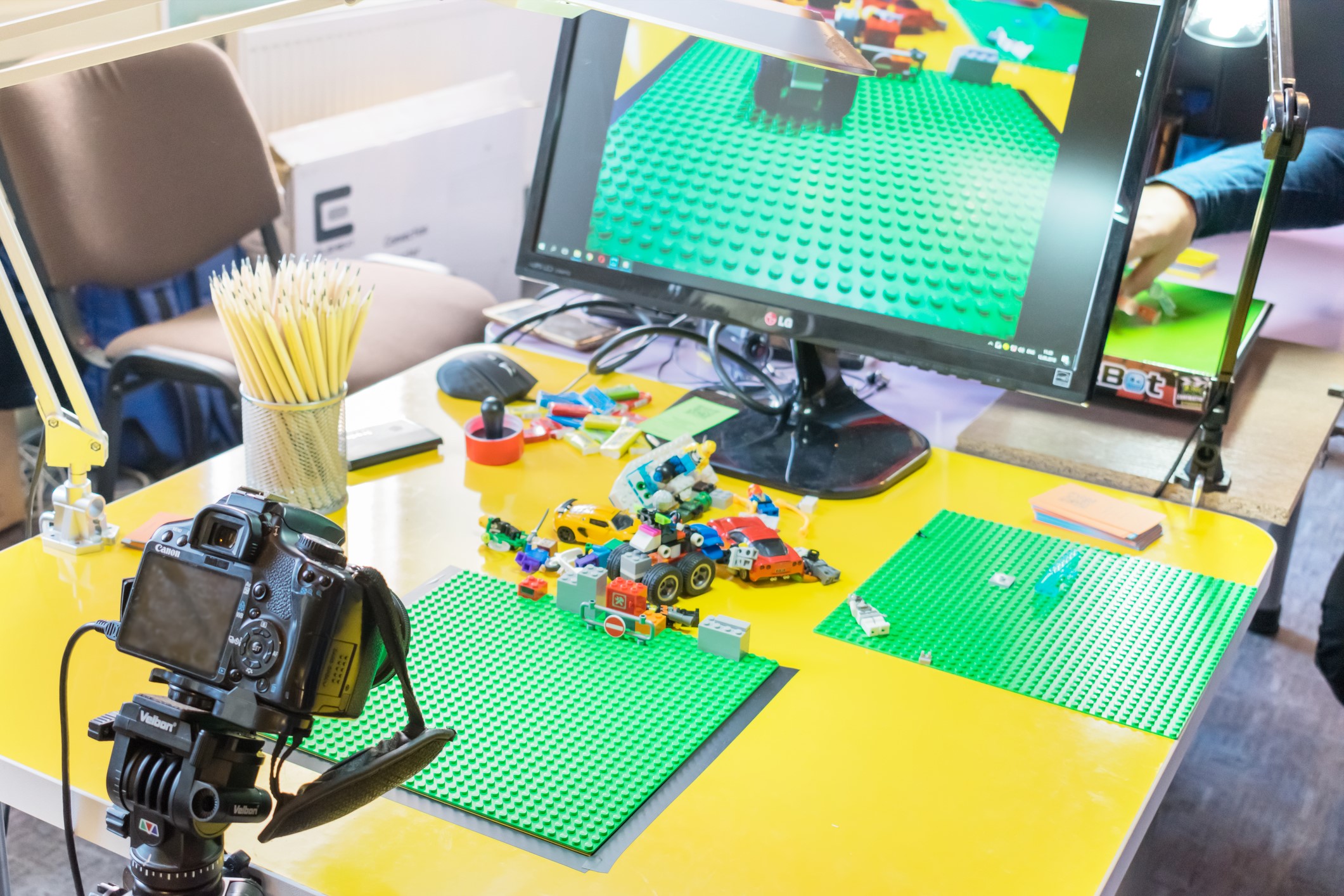
19 Jun Mastering the Art of Stop Motion Photography: An In-Depth Guide for Captivating Visual Stories
Stop-Motion photography has captivated audiences for decades, offering a unique and mesmerizing way to tell stories through a series of well-crafted frames. In this comprehensive guide, we dive into the art of stop-motion photography and equip you with the knowledge to master this captivating technique.
From its origins to its modern-day applications, stop-motion has evolved into a powerful storytelling medium that combines artistry, precision, and imagination. So, grab your camera, gather your props, and let’s embark on this exciting adventure together!
Getting Started with Stop Motion Photography
To embark on your stop-motion photography journey, you’ll need to gather the necessary equipment and set up your workspace. Start by selecting a camera and lenses that suit your needs and budget. Create an inviting and organized workspace with ample lighting to ensure optimal conditions for your creations.
With your tools in place, it’s time to delve into the planning and pre-production phase. Develop a concept for your project and bring it to life through Storyboarding. Choose props and characters that best convey your vision. Craft a shot list and timeline to guide your shooting process. By carefully preparing and organizing, you’ll lay a solid foundation for successful stop-motion photography.
Planning and Pre-production
In the planning and pre-production phase of your stop-motion photography project, your creative vision takes shape. Start by brainstorming ideas and developing a concept that resonates with your intended story or message. Storyboarding plays a crucial role in visualizing your shots and determining the flow of your narrative.
Once you have a solid concept, carefully select props and characters that align with your vision. Consider their size, durability, and ability to convey emotions. Crafting a detailed shot list and timeline helps you stay organized and ensures a smooth production process. Remember to explore various camera movements and angles to enhance the visual storytelling of your stop-motion project.
Shooting Techniques and Best Practices
When it comes to shooting techniques and best practices in stop-motion photography, precision and attention to detail are key. Embrace the frame-by-frame shooting method, capturing each incremental movement to bring your inanimate subjects to life. To achieve smooth movements and seamless transitions, use a sturdy tripod and make incremental adjustments between frames.
Maintain consistent focus and experiment with depth of field to create visual interest. Lighting plays a crucial role in setting the mood, so carefully control and adjust your lighting setup to enhance the overall aesthetics. Remember to practice patience and take your time to ensure each frame is captured with precision, resulting in a visually stunning stop-motion sequence.
Post-production and Editing
Post-production and editing are vital stages in the stop-motion photography process, where your captured frames come to life. Import your footage into editing software and organize it for easy access. Enhance the visual quality by adjusting brightness, contrast, and color balance to achieve your desired look.
Add depth and dimension by applying effects or filters selectively. Sound effects and music can amplify the impact of your stop-motion project, so carefully select and synchronize audio elements to complement the visuals. Fine-tune the timing and pacing of your frames, ensuring a seamless flow of motion. With meticulous editing, you can transform individual frames into a cohesive and captivating stop-motion masterpiece.
Advanced Techniques and Creative Tips
Once you’ve mastered the basics of stop-motion photography, it’s time to explore advanced techniques and unleash your creative potential. Incorporate special effects and visual tricks to add an extra layer of intrigue to your sequences. Experiment with different materials and textures to bring unique visual elements to your scenes.
Push the boundaries of stop-motion in various genres, from comedy to horror, and let your imagination run wild. Collaborate with other artists to combine skills and create stunning collaborations. Sharing your work with the world through social media and online platforms allows you to connect with a wider audience and gain valuable feedback. Embrace these advanced techniques and creative tips to take your stop-motion photography to new heights of artistic expression.
Overcoming Challenges and Troubleshooting
As with any creative endeavor, stop-motion photography presents its fair share of challenges. Flickering and inconsistent lighting can be frustrating, but by carefully adjusting your light sources and maintaining a consistent environment, you can minimize these issues. Time management and patience are crucial virtues, as stop-motion requires meticulous attention to detail and a considerable investment of time.
Troubleshooting technical issues, such as camera malfunctions, may arise, but with a calm and methodical approach, most problems can be resolved. Remember to seek guidance from online communities when facing roadblocks, as they can offer valuable insights and solutions. Embracing these challenges and troubleshooting techniques will ultimately strengthen your skills as a stop-motion photographer.
Conclusion
Stop-Motion photography is a captivating art form that allows you to tell visually stunning stories through the magic of animation. Throughout this comprehensive guide, we have explored the fundamentals, techniques, and creative possibilities of stop-motion. From getting started with the right equipment and planning meticulously to shooting with precision and navigating the post-production process, you have gained a solid understanding of this unique craft.
Remember, practice is key, and as you continue to experiment and refine your skills, you’ll unlock new levels of creativity. So, grab your camera, immerse yourself in the world of stop-motion, and let your imagination take flight. The possibilities are truly limitless, and your artistic journey awaits.


No Comments